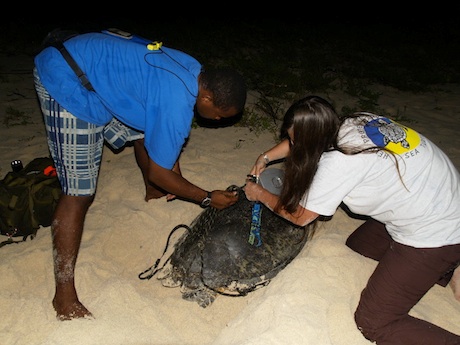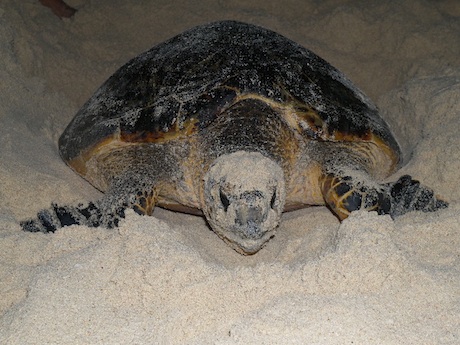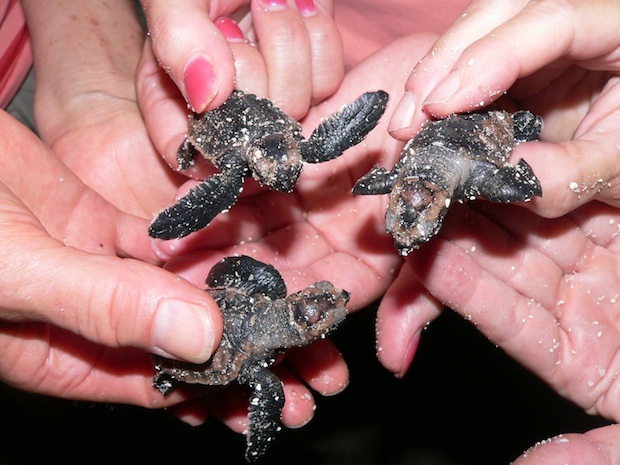
|
|
 |
||||||||||||||||||||
|
|
|||||||||||||||||||||
|
BARBADOS BLISS From Bajan History to Sea Turtle Conservation By Josephine Matyas Photos by Josephine Matyas and Gary Cralle I’m looking to wear lighter boots. I want to make more deliberate vacation choices – ones that leave a gentler footprint on the land and sea. And I am not alone. More and more visitors to fragile destinations - like the island of Barbados - are placing a high priority on experiences that are environmentally friendly, many that come with a dose of learning as well as fun. I decided that in addition to enjoying the sunshine and the clear blue water, I am going to explore the corners of the island - it’s all part of wearing lighter boots.  First stop: the Barbados Museum, housed in a 19th century British military prison in the historic Garrison district. I stepped through the front archway of rough, pink coral stone (the land base of Barbados is the coral-capped island of an ancient underwater mountain range), and into a wonderful introduction to the island. Inside the museum there are galleries on Bajan history, architecture and society, but highlights for nature lovers are Born of the Sea, the gallery that tells the natural history of the island, and the current special exhibit titled: “Biodiversity.” These displays - that include corals, reefs, mangroves, and land and sea creatures - are the best introduction to the natural wonders of Barbados. First stop: the Barbados Museum, housed in a 19th century British military prison in the historic Garrison district. I stepped through the front archway of rough, pink coral stone (the land base of Barbados is the coral-capped island of an ancient underwater mountain range), and into a wonderful introduction to the island. Inside the museum there are galleries on Bajan history, architecture and society, but highlights for nature lovers are Born of the Sea, the gallery that tells the natural history of the island, and the current special exhibit titled: “Biodiversity.” These displays - that include corals, reefs, mangroves, and land and sea creatures - are the best introduction to the natural wonders of Barbados.When European settlers arrived in the 17th century, they found an island covered by forest. But by the year 1650 more than 80% had been clear-cut to make way for profitable sugar plantations. Only one patch of ancestral forest remains - Turner’s Hall Wood - but in the countryside there are many gully walks (think green ravines) popular with the locals and visitors looking to get off the beaten track. The Barbados National Trust has developed and protected trails into the luxurious growth of the gullies, from the sign-posted route into “Welchman Hall Gully,” to the more rugged “Jack In The Box Gully.” These deep gorges found in the higher central part of the island are thick with tropical vegetation and home to birds, endemic plants, and the green monkey, believed to have come as stowaways on slave ships 350 years ago. Closer to the wild and beautiful Atlantic coast is the Barbados Wildlife Reserve - four acres of mahogany forest and animal sanctuary. Once you enter through the coral stone gates, you become the visitor in the animals’ world. Except for a few caged species (including a python as thick as a tree trunk), the turtles, flamingos, agouti, iguanas, mongoose, green monkeys and Brocket deer are free to roam the grounds. A small network of paths made from bricks of the boiler furnaces of the island’s 500 abandoned sugar plantations still show the stamps of the overseas manufacturing companies. Brought to Barbados as ships’ ballast, the bricks are reminders of the role sugar plantations played in forming the history and altering the landscape of the Caribbean islands. Land was cleared to plant sugar cane, slave labour was brought from West Africa to work the plantations, and the prosperity of an island rose and fell with the sugar market. I sat in the peaceful surroundings and reflected on the resulting threat, disappearance and extinction to different species on the island. At the heart of sea turtle conservation is the Barbados Sea Turtle Project (BSTP) of the University of the West Indies.  According to Program Director Dr. Julia Horrocks, BSTP has been making efforts to protect sea turtles through monitoring and research efforts since 1987. Visitors who come to Barbados during the nesting season (May to October for the endangered hawksbill turtle; February to July for the leatherback turtle) have an excellent chance of seeing a nesting turtle or a sight of hatchlings as they head toward the open sea. Horrocks feels that when tourists are properly guided to observe nesting, it can be a wonderful, intimate experience and a vacation highlight. According to Program Director Dr. Julia Horrocks, BSTP has been making efforts to protect sea turtles through monitoring and research efforts since 1987. Visitors who come to Barbados during the nesting season (May to October for the endangered hawksbill turtle; February to July for the leatherback turtle) have an excellent chance of seeing a nesting turtle or a sight of hatchlings as they head toward the open sea. Horrocks feels that when tourists are properly guided to observe nesting, it can be a wonderful, intimate experience and a vacation highlight.The BSTP operates a 24-hour hotline to report any nesting or hatching activity during the season. Human interference, poachers, car traffic and high tide levels can all threaten the viability of a nesting site.  Nesting sites are mapped and recorded and then monitored by the program staff. After 60 days of gestation the hatchlings emerge and, ideally, head for the open sea. The hatchlings move naturally towards light and are often confused by the glow of the hotels, becoming sidetracked and ending up in swimming pools or stranded on busy roadways. If they are disoriented they are gathered up by BSTP staff and released in a safer location. Nesting sites are mapped and recorded and then monitored by the program staff. After 60 days of gestation the hatchlings emerge and, ideally, head for the open sea. The hatchlings move naturally towards light and are often confused by the glow of the hotels, becoming sidetracked and ending up in swimming pools or stranded on busy roadways. If they are disoriented they are gathered up by BSTP staff and released in a safer location. A mature female lays about four clutches (of 150 eggs each) throughout the nesting season. After battling human encroachment, crabs, hungry dogs and cats, poachers, pollution and entanglement in fishing nets, only about one in a thousand hatchlings survives to adulthood; so conservation efforts are crucial. BSTP also provides local outreach and education - staff visits local schools to teach children about preservation and protection of the turtle species. If all goes well, the project will help derail the hawksbill’s collision course with extinction by protecting the nesting females and their tiny hatchlings. When the British colonized Barbados in the early 1600s, sea turtles were the ideal provisions for the exploratory voyages that followed; the turtles travelled well in a ship’s hold, so there was always a source of fresh meat. Today, however, the hawksbill’s habitat is being ruined: the water and coral reefs where they feed on sponges are threatened by over-harvesting, oil spills, chemical waste and pollution. Hotels, condos and restaurants built on prime coastline real estate have wiped out the turtles’ precious nesting grounds. For centuries, the hawksbill turtle has been a target - hunted for its eggs and tender meat as food, and for its decorative tortoiseshell. Extensively harvested, what was once one of the world’s largest breeding populations of hawksbill sea turtles has now been reduced to a category on the list of endangered species. In 1998 the government brought in a measure of protection that includes a total moratorium of all sea turtle products (including meat, shells and eggs) in an effort to discourage hunting and poaching.  On a day that started with a museum visit and ended with a walk along the beach, I struck gold. At first they looked like crabs, scurrying along the sand. I soon realized I’d happened upon that special five-minute window, where clutch of eggs hatch all at once and the tiny turtles scramble towards the light reflecting on the waves. For those five minutes I was rendered speechless by that moment of pure magic. On a day that started with a museum visit and ended with a walk along the beach, I struck gold. At first they looked like crabs, scurrying along the sand. I soon realized I’d happened upon that special five-minute window, where clutch of eggs hatch all at once and the tiny turtles scramble towards the light reflecting on the waves. For those five minutes I was rendered speechless by that moment of pure magic.FAST FACTS The mission of the Barbados Sea Turtle Project (BSTP) is to monitor the nesting success of endangered sea turtles and to aid in their recovery. Each year, staff and volunteers gather data on nesting turtles. www.barbadosseaturtles.org General information on Barbados can be found at www.visitbarbados.org Josephine Matyas is a Canadian travel journalist who often writes about ecotourism, soft outdoor adventure and fragile destinations. You can find her at www.writerwithoutborders.com |
|
|
|
|
| Site Map |